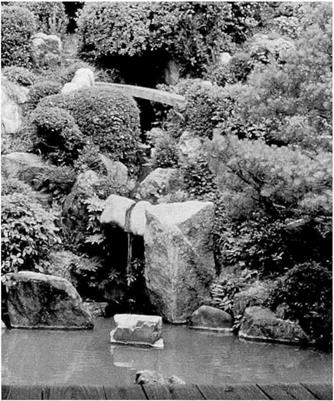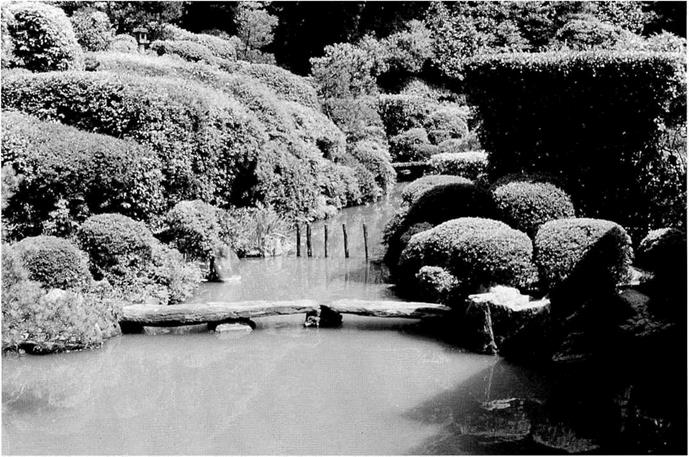Of the garden’s six basic compositional elements, the white sand area, which had played a primary role in the Zen temple south garden, was relegated to a secondary role on the east side of the Kojo-in guest hall, and the pond, islands, and artificial hills, which had been omitted from the Zen temple garden, were here condensed, together with the garden stream and waterfall, into a single, dense landscape scene, and drawn up close to the south side of the building (see Figures 29.1-29.2).
The condensed garden was actually composed of a series of parallel scenes, each corresponding to particular, fixed seated positions in the joza, chUza and geza rooms of the guest hall. The early-Azuchi-Momoyama Kojo-in guest hall and Daigoji Sanpo-in gardens reflect this same design development.
As a further means of representing rank spatially, in addition to the definitive jodan zashiki accoutrements, this room was decorated with coved and coffered ceilings (oriage-gotenjo) and Kano-school screen and wall paintings (shoheiga). The mature shoin-zukuri garden became progressively more ornate and representational in expression as a result of influence from these paintings.
The style of Kano-school screen and wall paintings typically commissioned to decorate shoin-zukuri guest halls consisted of rich color against a gold leaf ground. The picture plane was monumental in scale, and the subject—most frequently, trees and plants from the four seasons—depicted at close range with a combination of bold, sweeping strokes and finely detailed brushwork—much like a landscape scene photographed with a long lens. There was no middle-range or distant view, and none of the abstract white space seen in the ink-wash paintings after which Zen gardens were patterned.
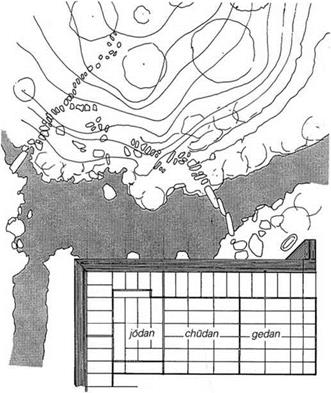
|
35.1 Plan view drawing of the Chishaku-in shoin and south garden, Kyoto.
|
![]()
|
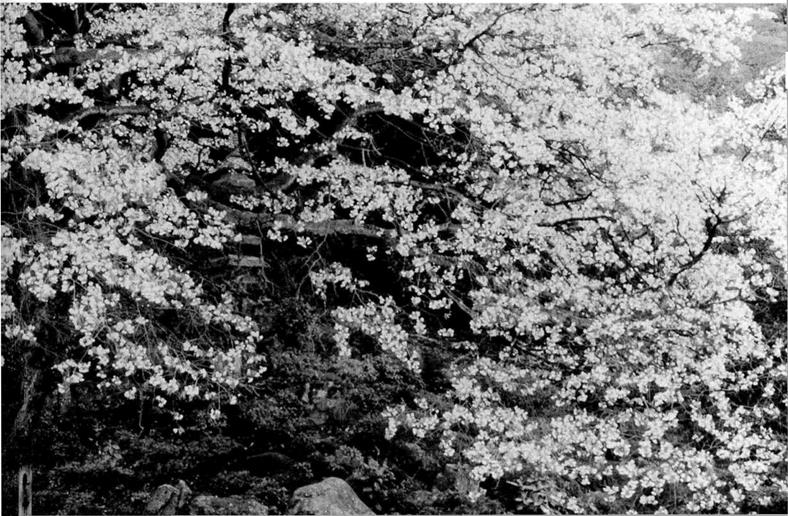
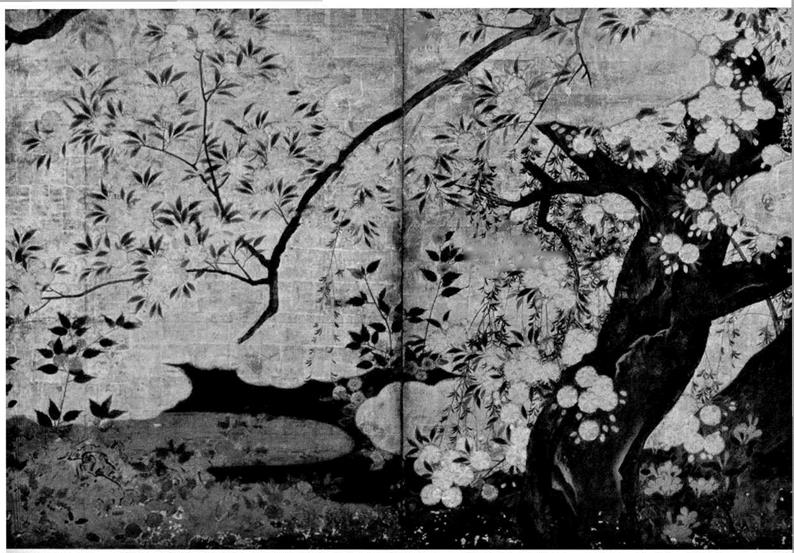

![]()
![]()
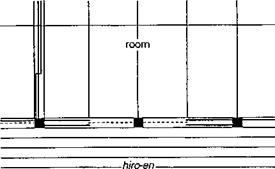 The interior walls and screens dividing the rooms of the formal hare space were covered floor-to-ceiling with these paintings, with the focal point of the overall composition centered on the jodan no та. The “picture plane” of the garden decorated the fourth, or exterior wall, and like these paintings, it was dense and representational. These qualities were achieved by condensing the hills, pond, islands, garden stream, and waterfall into a single, concentrated scene, and drawing them close to the opening of the building, creating a foreshortened, close-up view. The wall paintings and garden together created a homogeneous, majestic, and ornate “interior/exterior” environment (Figures 35.1-35.5).
The interior walls and screens dividing the rooms of the formal hare space were covered floor-to-ceiling with these paintings, with the focal point of the overall composition centered on the jodan no та. The “picture plane” of the garden decorated the fourth, or exterior wall, and like these paintings, it was dense and representational. These qualities were achieved by condensing the hills, pond, islands, garden stream, and waterfall into a single, concentrated scene, and drawing them close to the opening of the building, creating a foreshortened, close-up view. The wall paintings and garden together created a homogeneous, majestic, and ornate “interior/exterior” environment (Figures 35.1-35.5).
![]()



